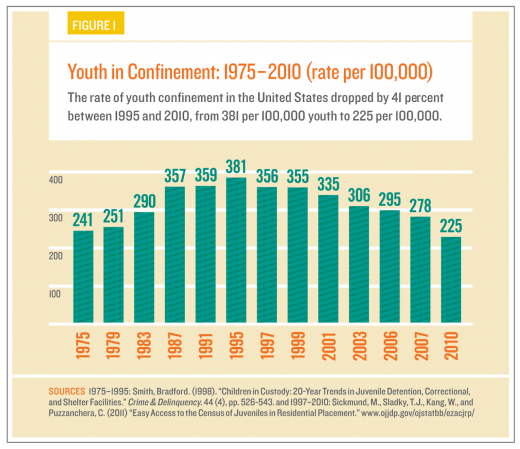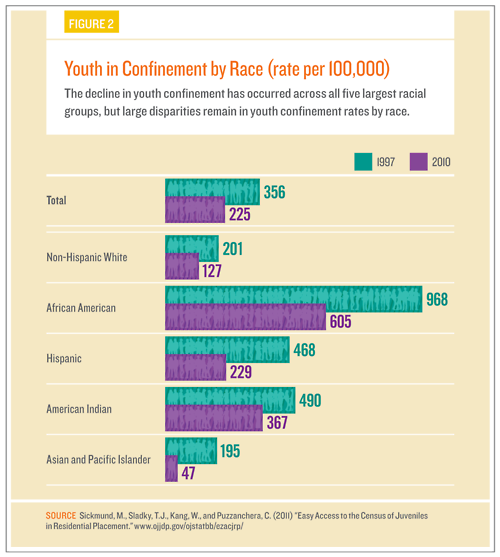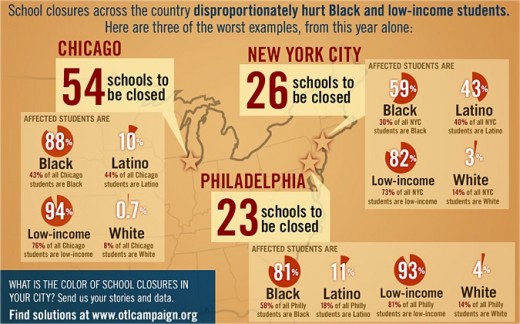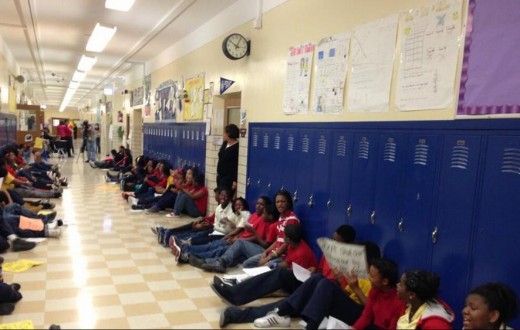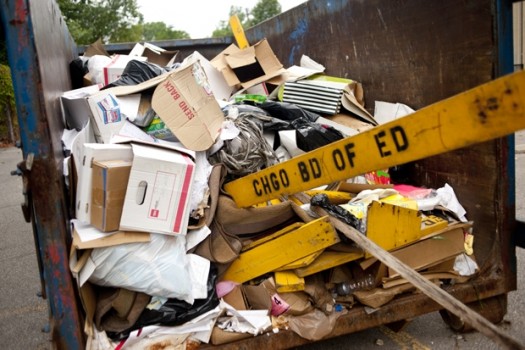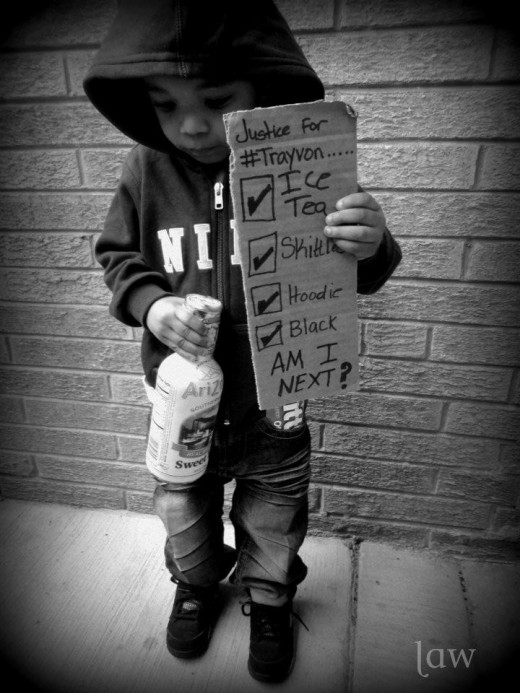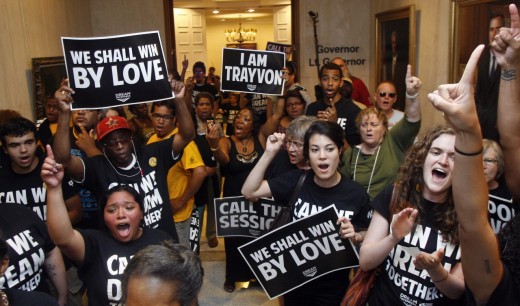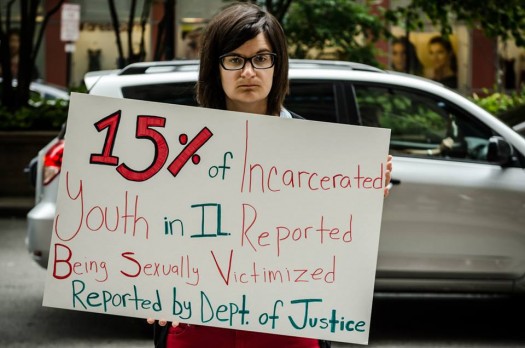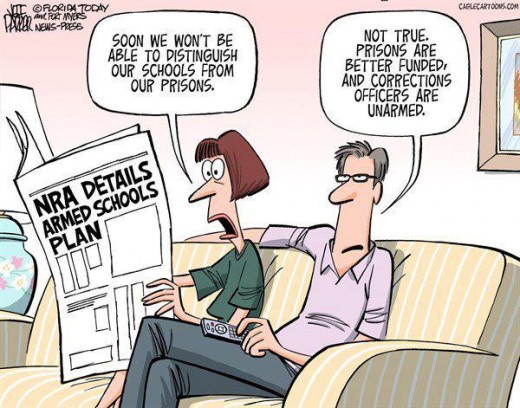10 Things To Know About Juvenile Justice & Youth Criminalization in 2013
Last week, I offered a summary of some of the key issues related to the prison industrial complex in 2013. Since the main focus of my work is actually juvenile justice & youth criminalization, I decided to make another list that addresses some key 2013 developments in those areas.
1. The U.S. youth incarceration rate continues to decline but we still lock up too many children.
One of the most heartening trends over the past decade has been the steady decrease in the use of incarceration to address youth crime and misbehavior.
According to a new report:
“For the 2001-to-2011 ten-year period, the number of confined youth declined by 41% nationwide, or an annual average decline of 4.1% — a dramatic drop since 2000, when a record-setting 108,802 youth were held in detention centers awaiting trial or confined by the courts in juvenile facilities in the U.S. The nationwide decline in 2011 (from 70,793 to 61,423 youth) continues the trend from the previous year (the latest for which data is available), which showed youth confinement was reduced by 32% nationwide from 2001-2010.”
Unfortunately, poor black children remain disportionately targeted.
Since all credible research shows that incarceration and detention don’t work, many jurisdictions are relying more regularly on alternatives to youth incarceration.
2. School closings in urban centers overwhelmingly impacted youth of color (black children in particular)..
Victor Hugo has written that: “He who opens a school door, closes a prison.” It stands to reason that the reverse is also true: “He who closes a school door, opens a prison.” Chicago roiled in 2013 with grassroots opposition to the proposed closures of over 50 schools. Opponents contended that these school closings were racist as they would disproportionately target black students and increase the likelihood that they would be pushed out of school. Some background resources about Chicago’s school closings can be found here.
Some of the most vocal opponents of school closures in Chicago, Philadelphia, D.C. etc… were students themselves. 9 year old Asean Johnson became a household name when he spoke out forcefully against Rahm Emanuel at a rally that I attended.
Students at Williams Elementary organized a sit-in to protest their school’s proposed closing.
In the end, Rahm Emanuel and his appointed school board shut down nearly 50 schools. This was the largest mass school closing in the U.S.
3. The Federal government entered the fray to address racist school discipline policies.
In March 2013, the Department of Justice (DOJ) entered into a consent decree with the Meridian (Mississippi) Public Schools to prevent racial discrimination in school discipline. After an eight-month investigation, in fall 2012, DOJ alleged that Meridian officials were operating a “school-to-prison pipeline:”
In the course of the investigation, the department found that black students frequently received harsher disciplinary consequences, including longer suspensions, than white students for comparable misbehavior, even where the students were at the same school, were of similar ages, and had similar disciplinary histories.
The DOJ is suing other agencies in Meridian for their role in operating a “school-to-prison pipeline” and that case is proceeding.
4. In an investigative report, The Huffington Post exposed how youth are abused & mistreated in private prisons.
The groundbreaking investigation found that Youth Services International (YSI), a private prison company that runs juvenile detention centers, has a record of abuse and neglect that spans 25 years. Despite this atrocious record, YSI has been growing and expanding its reach:
“More than 40,000 boys and girls in 16 states have gone through these facilities in the past two decades. This comes as nearly 40 percent of all detained juveniles are now committed to private facilities, and in Florida, it is 100 percent.”
Democracy NOW interviewed journalist Chris Kirkham about his two-part report.
5. George Zimmerman was acquitted of killing Trayvon Martin.
On July 13, a jury found George Zimmerman not guilty of murder or manslaughter in the death of Trayvon Martin. I compiled a youth-friendly reader about the case and the reaction to the verdict. It can be found here.
In the aftermath of the verdict, Jasiri X released a poignant remix of “Blood on the Leaves.”
Trayvon Martin’s killing and the subsequent acquital of George Zimmerman has led to a mobilization of youth across the country. Three days after the verdict, Florida-based youth-led group “The Dream Defenders” occupied the state Capitol for 31 days to demand that Governor Rick Scott call a special session on the Stand Your Ground self-defense law. They weren’t able to convince him to do this but gained national attention for their issues and have continued to organize for criminal legal reforms.
6. On January 1, 2014, Illinois joins 38 other states placing 17-year-olds charged with felonies in juvenile court.
HB2404 which was signed into law by Governor Pat Quinn in July 2013 will allow youth to be tried as juveniles and access more rehabilitative services in the juvenile justice system rather than receiving adult criminal convictions and records. The law does not change state laws that allow youth who commit certain serious crimes, such as first degree murder, to be automatically waived to adult criminal court.
North Carolina is currently also working on a similar effort to raise the age of juvenile prosecutions.
For more information about the trend in the states toward reducing the prosecution of juveniles in the adult criminal justice system or preventing youth from being placed in adult jails and prisons, read the new report by the Campaign for Youth Justice.
7. States & municipalities are still being sued for housing juveniles in adult jails and prisons and for abusing them while incarcerated.
Last year, the Southern Poverty Law Center sued Polk County, Florida & its Sheriff Grady Judd alleging that children systematically abused and mistreated in jail:
“The suit,Hughes, et al. v. Judd, et al, alleges that children are subjected to dangerous conditions of confinement, including the failure to have staff stationed inside juvenile dorms; the pepper-spraying of children for failing to obey orders; the placement of children in harsh isolation conditions without due process; and the cruel treatment of children on suicide watch. The lawsuit also presents evidence of Judd’s failure to provide the children in his care with a rehabilitative environment and of private medical provider Corizon Health Inc.’s failure to provide children with adequate mental health care. Corizon Health is a co-defendant in the case.”
The trial started on November 18.
8. People power (led by young organizers) led to a victory against NYPD’s Stop & Frisk policy.
Stop and Frisk was very much in the news in 2013. According to the Vera Institute for Justice, in New York City, “at least half of all recorded stops annually involve those between the ages of 13 and 25.” Vera’s research demonstrates the negative impact of stop and frisk on young people. Their study finds that the practice contributes to lack of trust of law enforcement among youth.
Communities United For Police Reform brought together a diverse group of lawyers, community members (including many youth), scholars and activists in a campaign to end discriminatory policing practices in New York. They successfully organized through the courts and in the streets to successfully challenge the NYPD’s stop and frisk policy. The legal decision is still being appealed but this is a wonderful example of successful grassroots organizing.
Among the many successful strategies that the coalition used was media-making. They created some of the most impactful videos that I’ve seen. Below is just one example:
9. Children continue to be sexually assaulted and raped in detention centers and prisons.
In June, the Department of Justice released a report (PDF) stating that 9.5 percent of children in juvenile detention/prison facilities reported being sexually abused in the previous year. The majority of the sexual violence is committed by adult staff rather than other inmates.
The following were the key findings from the report:
a. An estimated 9.5% of adjudicated youth in state juvenile facilities and state contract facilities (representing 1,720 youth nationwide) reported experiencing one or more incidents of sexual victimization by another youth or staff in the past 12 months or since admission, if less than 12 months.
b. About 2.5% of youth (450 nationwide) reported an incident involving another youth, and 7.7% (1,390) reported an incident involving facility staff.
c. An estimated 3.5% of youth reported having sex or other sexual contact with facility staff as a result of force or other forms of coercion, while 4.7% of youth reported sexual contact with staff without any force, threat, or explicit form of coercion.
d. Thirteen facilities were identified as high-rate based on the prevalence of sexual victimization by youth or staff. Rates in each of these facilities had a 95%-confidence interval with a lower bound that was at least 35% higher than the average rate of sexual victimization among facilities nationwide.
e. About 67.7% of youth victimized by another youth reported experiencing physical force or threat of force, 25.2% were offered favors or protection, and 18.1% were given drugs or alcohol to engage in sexual contact.
As of August, all youth facilities are expected to be in compliance with the Prisoner Rape Elimination Act (PREA) as the Department of Justice will finally begin to audit facilities.
10. The NRA’s solution to school shootings is still armed cops and teachers.
In response to the Sandy Hook school shooting last December, this spring a taskforce sponsored by the NRA proposed arming teachers and school staff to “protect” students. Earlier in the year, President Obama released a series of gun control proposals that included a potential increase in school resource officers (i.e. school police):
“The Administration is calling on Congress to help schools hire up to 1,000 more school resource officers, school psychologists, social workers, and counselors, as well as make other investments in school safety. We also need to make sure every school has a comprehensive emergency management plan so they are prepared to respond to situations like mass shootings. In addition, the Administration is proposing to help 8,000 schools put in place proven strategies to prevent violence and improve school climate by reducing bullying, drug abuse, violence, and other problem behaviors.”
Individuals and organizations across the country mobilized against these proposals culminating in a week-long youth-led awareness campaign titled “No Peace with a Piece.”
Honorable mentions:
The problem with lists is that they are always incomplete. I promised that I would limit myself to 10 issues. As such, I couldn’t include everything that I wanted. For example, the Massachusetts Supreme Court just struck down juvenile life without parole sentences as unconstitutional. This follows on the heels of last year’s landmark U.S. Supreme Court decision in Miller v. Alabama & Jackson v Hobbs which held that mandatory life-without-parole sentences for all children 17 or younger convicted of homicide are unconstitutional.
I also couldn’t include Kiera Wilmot who was arrested & expelled for a failed science experiment. Wilmot was potentially facing serious jail time until a public outcry led officials to drop criminal charges against her.
You get the picture. There are many other items that could be added to this list but alas this will have to do for this year.
